Struggling to decide between a nylon or polyester bag? Choosing the wrong material can lead to a bag that tears, fades, or just doesn’t last. Let’s make the decision simple.
Choose nylon for its superior strength and durability, making it perfect for heavy-duty gear like hiking packs. Opt for polyester when you need excellent UV resistance, vibrant custom prints, and a more budget-friendly option for everyday or promotional bags.
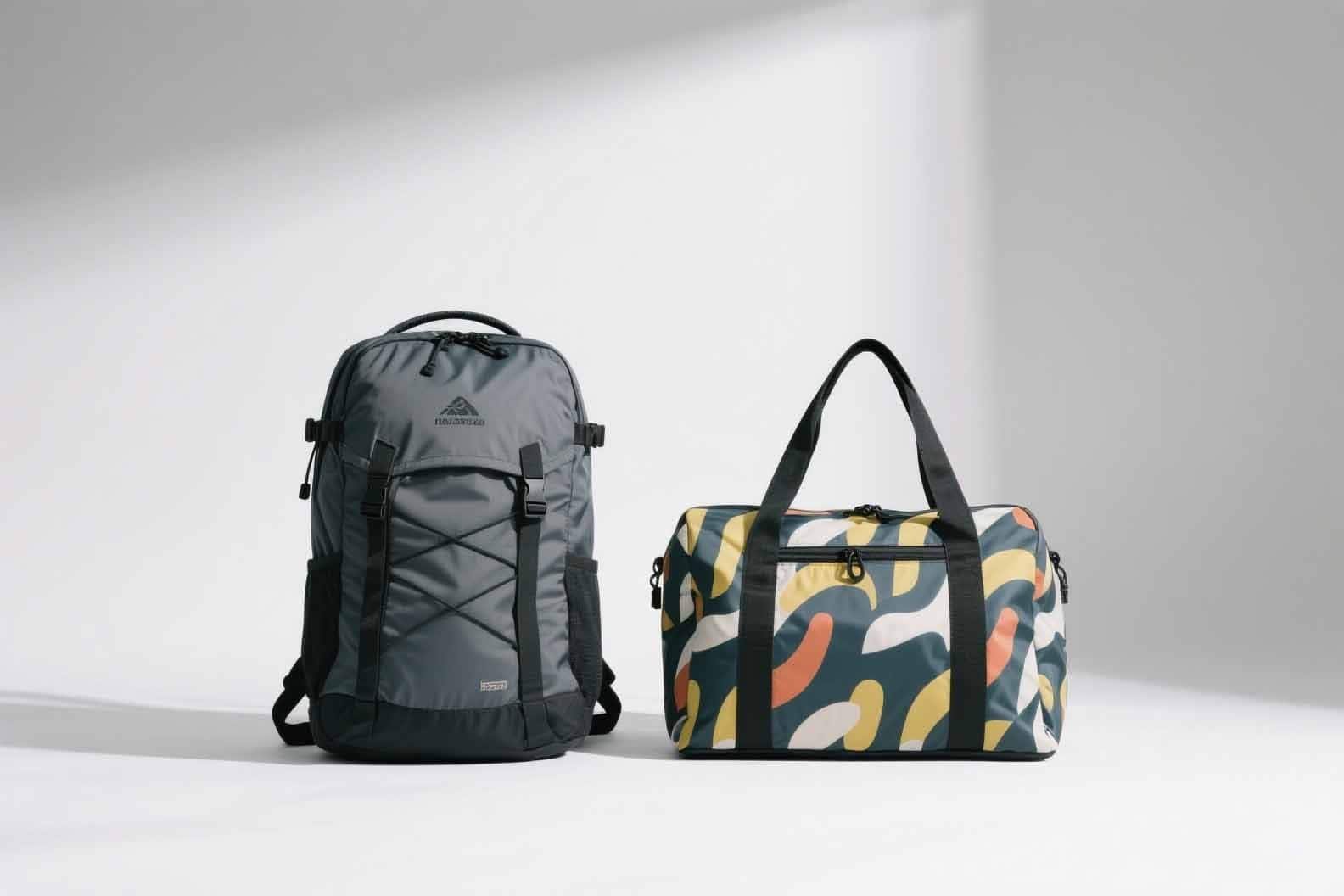
You now have the quick answer, but the best choice truly comes down to what you need the bag for. Are you creating a rugged product for outdoor adventures, or do you need a stylish, affordable bag to promote your brand? Let’s dive deeper to ensure you pick the perfect material that aligns with your goals and budget.
What Are the Key Differences Between Nylon and Polyester?
Do nylon and polyester seem almost the same to you? This confusion can lead you to pick a material that doesn’t fit your product’s needs. Let’s break down the distinct features of each.
Nylon is known for being stronger and more elastic with a softer, shinier feel. Polyester stands out for being naturally water-repellent, better at resisting UV rays, and more affordable, though it’s not quite as tough as nylon.
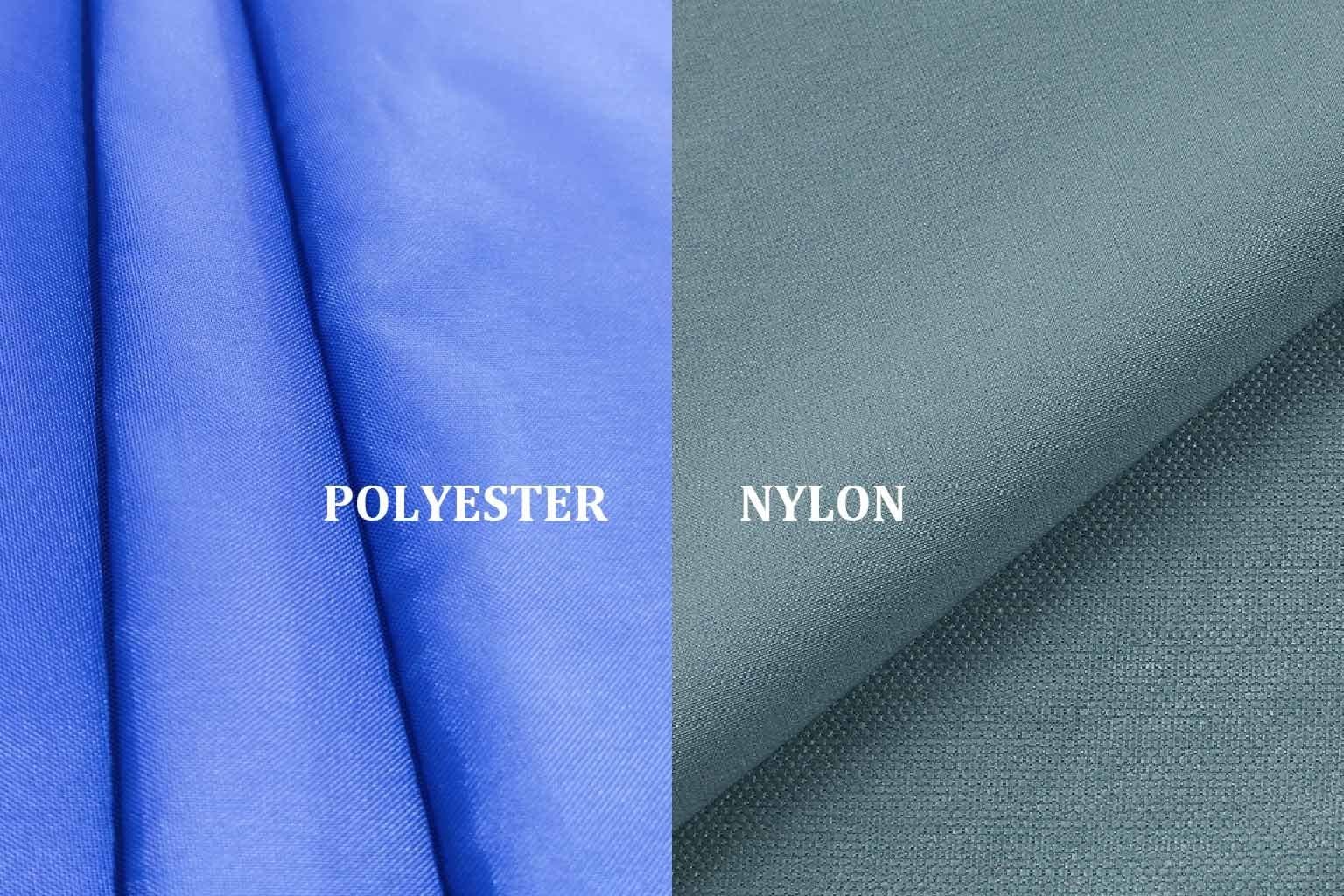
To make it even clearer, I’ve found that looking at the materials side-by-side is the best way to understand their unique advantages. As a business owner, I always weigh these factors to advise my clients on the best choice for their specific projects. This table simplifies the comparison based on what I’ve learned from years of sourcing and testing.
| Funktion | Nylon Bag | Polyester Bag |
|---|---|---|
| Strength & Durability | Higher tensile strength, more elastic, very durable. | Durable but with lower tensile strength. |
| Vandtæthed | Absorbs water but is strong when coated. | Naturally water-repellent and dries quickly. |
| UV Resistance | Poorer; can fade and weaken in prolonged sun. | Excellent; retains color and strength in sunlight. |
| Appearance & Feel | Glossy, smooth, and soft with a slight sheen. | Matte finish, feels slightly stiffer, holds shape. |
| Omkostninger | More expensive due to a complex production process. | More affordable and budget-friendly. |
| Environmental Impact | Production is energy-intensive; recycling is limited. | More eco-friendly options; rPET is widely recycled. |
| Custom Printing | Can be tricky; may require special inks. | Excellent for printing, holds vibrant colors well. |
Why is Nylon Often Considered More Durable Than Polyester?
Are you worried that your bags won’t be able to handle tough conditions? It’s frustrating to invest in a product only to have it tear or wear out quickly. Nylon’s structure is the solution.
Nylon is considered more durable primarily because of its excellent tensile strength and elasticity. Its fibers can stretch significantly and return to their original shape, giving it superior resistance to pulling, stretching, and tearing compared to polyester.
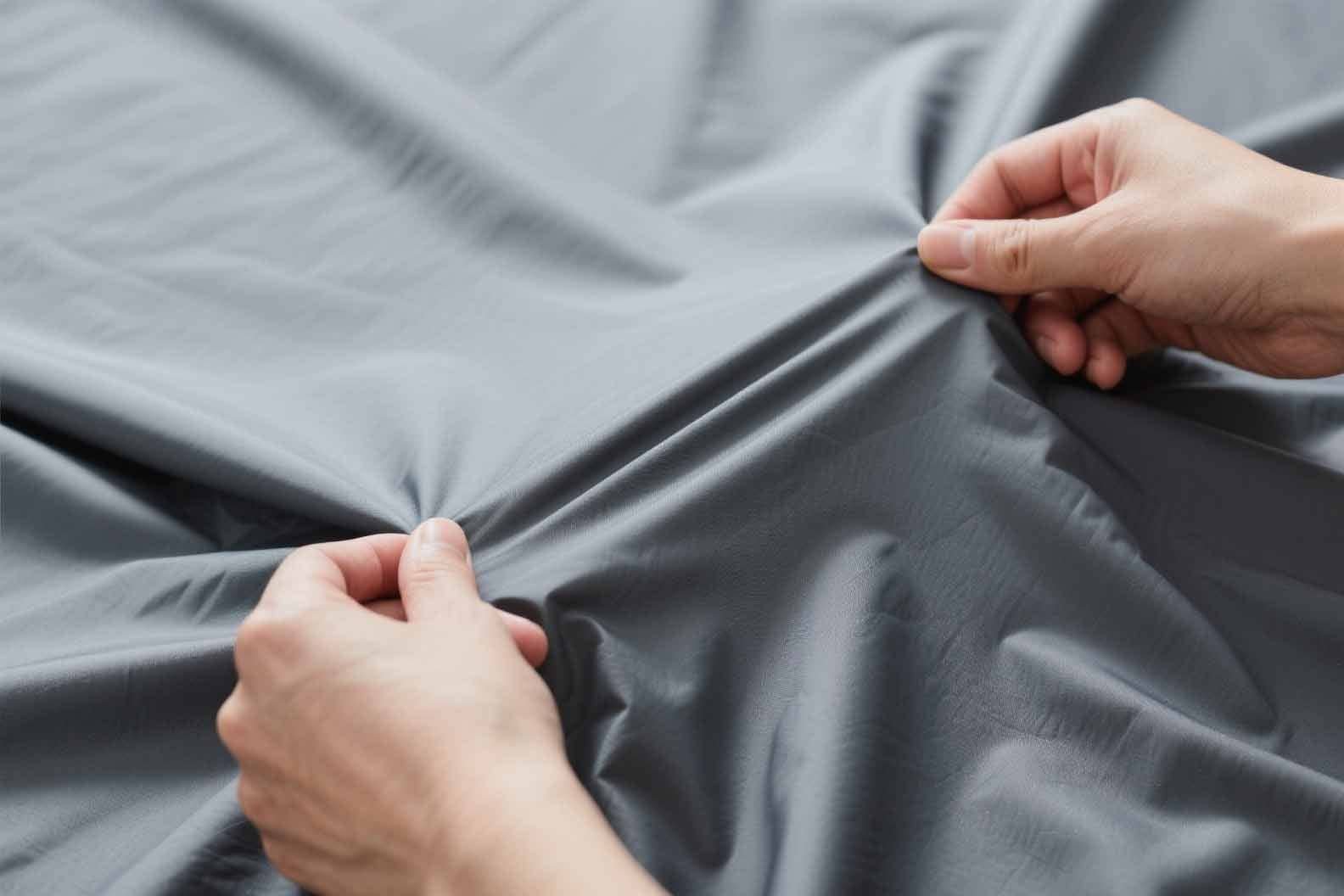
When I work with brands that need gear for demanding activities, nylon is almost always the answer. Its unique properties provide a level of reliability that other materials can’t match. Let’s break down exactly what makes it so tough.
Superior Tensile Strength
Tensile strength is the ability to resist a pulling force. Nylon fibers1 are incredibly strong for their weight. This means a nylon bag can carry heavy loads without the seams or fabric failing.
Elasticity and Abrasion Resistance
Nylon’s elasticity2 is its secret weapon. When a nylon bag snags on a sharp corner or a tree branch, the fabric has enough “give” to stretch instead of instantly tearing. This flexibility, combined with its smooth surface, also helps it resist abrasion, or wear from friction. Polyester is strong, but it’s more rigid. In the same situation, it’s more likely to scuff or rip because it doesn’t have that same elastic recovery.
How Do Nylon and Polyester Perform in Real-World Use?
It’s one thing to talk about material specs, but how do they actually perform out in the field? You need a bag that works for your customers’ real-world activities, not just in a lab.
In real-world use, nylon’s strength and tear resistance make it the clear winner for high-impact gear, like mountaineering packs or military equipment. Professionals choose it because its durability provides reliability when gear failure is not an option.

The reason so many outdoor and adventure brands rely on nylon is simple: it stands up to abuse. Polyester is a fantastic all-around material, but nylon excels in extreme conditions.
Think about a large travel backpack, packed to its limit. The shoulder straps, handles, and main body are under constant strain. Nylon’s high tensile strength ensures it can handle that stress day after day. Its abrasion resistance is also critical when the bag is tossed around, scraped against rocks, or dragged on the ground. For these high-stress applications, nylon’s durability isn’t just a feature—it’s a fundamental requirement for performance and safety. While a polyester bag is perfect for a trip to the gym or a day at the beach, nylon is the material you trust when you’re miles from home and need your gear to hold up.
Which Material Is Better for Custom Printed or Branded Bags?
Do you want your logo to look sharp and stay vibrant on a promotional bag? It’s disappointing when you order custom bags and the print fades, cracks, or just doesn’t stand out.
Polyester is the superior choice for most custom-printed and branded bags. Its fibers accept dyes and inks more readily, especially in sublimation printing, resulting in bright, crisp, and long-lasting designs. It’s also more cost-effective for bulk orders.
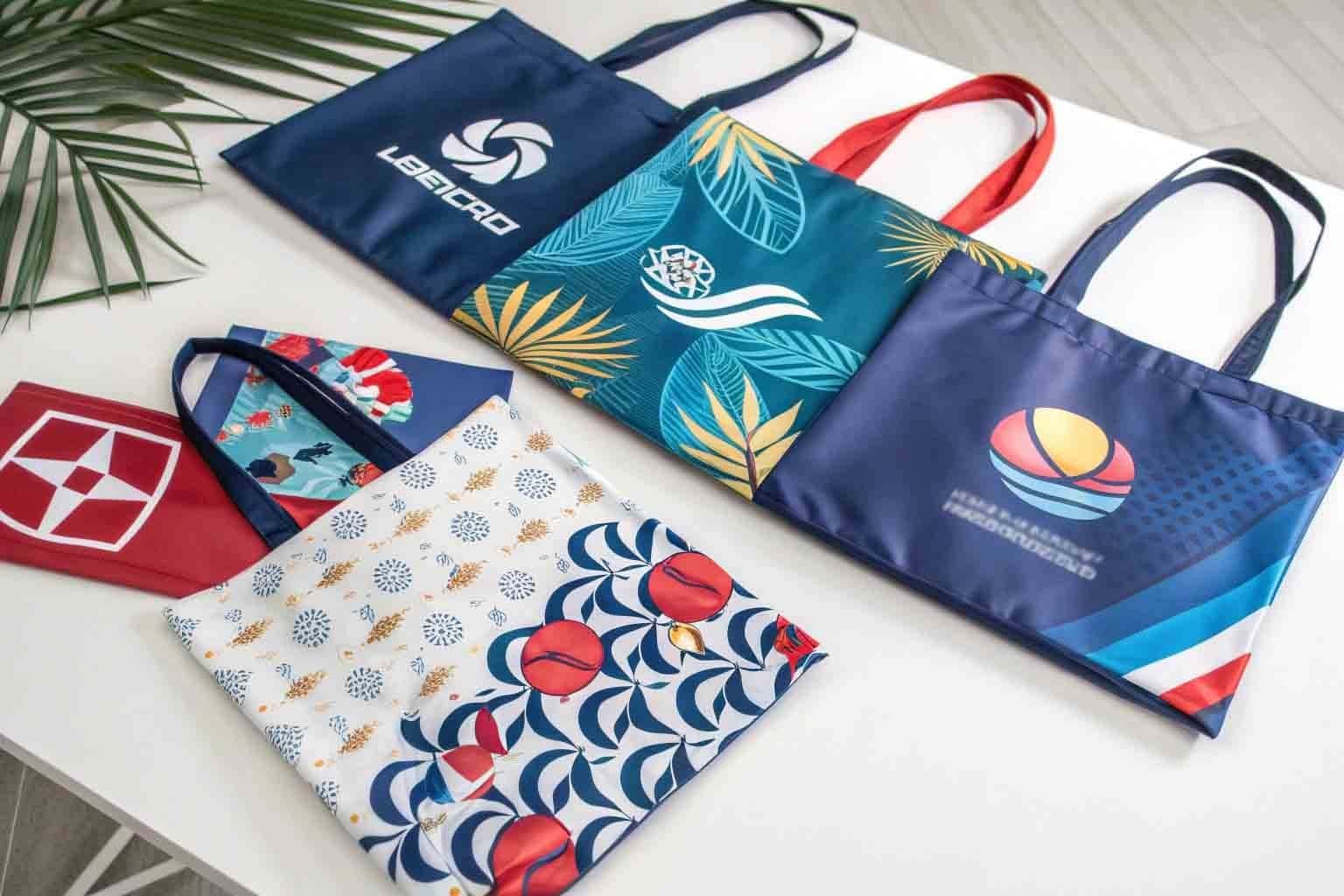
As someone who helps businesses create beautiful branded products, this is a conversation I have all the time. While nylon has its strengths, polyester was practically made for printing.
Printing Advantages
Polyester’s surface chemistry is ideal for modern printing techniques. With sublimation3, for example, the ink turns into a gas under heat and bonds directly with the polyester fibers. This creates a permanent, photo-quality image that won’t crack or peel. Screen printing on polyester is also very effective. Nylon’s slicker, stretchier surface can be more challenging. Inks don’t always bond as well without special additives, and the fabric’s stretch can distort the image over time. For a brand, a crisp and durable logo is everything, and polyester delivers that consistently.
Cost and Appearance
From a business standpoint, polyester offers the best value for promotional items. The raw material is more affordable, and the printing process is simpler and faster, which lowers the cost per bag. Because polyester holds its structure well, it provides a flat, stable canvas for printing, ensuring your branding looks professional and clean every time.
When Should You Choose Nylon Over Polyester—And Vice Versa?
Still trying to make the final call? The wrong choice can impact your product’s performance, brand image, and budget. Let’s make this decision crystal clear with specific examples.
Choose nylon for high-performance gear where durability is non-negotiable (e.g., hiking packs). Opt for polyester for everyday items, especially branded bags, where vibrant printing, UV resistance, and cost-effectiveness are your top priorities.
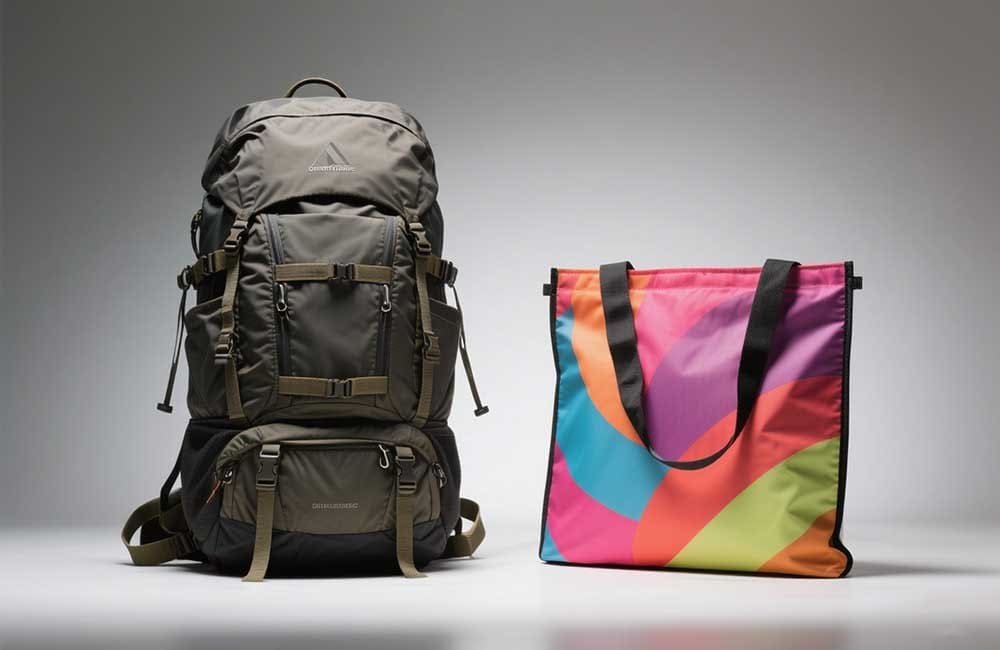
I always advise my clients to think about the primary function of the bag above all else. Is it meant to survive extreme conditions or to carry a brand’s message in daily life? The answer to that question will almost always point you to the right material. To help you visualize this, I’ve put together a guide that outlines specific scenarios and which material is the clear winner for each.
| Scenario / Use Case | Recommended Material | Why It’s the Best Choice | Example Bag Styles |
|---|---|---|---|
| Intense Outdoor Adventures | Nylon | Its unmatched tensile strength and abrasion resistance are critical for reliability in harsh environments. The elasticity helps prevent tearing. | Multi-day hiking backpacks, mountaineering packs, climbing rope bags, technical shells. |
| Heavy-Duty Travel | Nylon | It can withstand the rough handling of airport baggage systems. Its high strength-to-weight ratio keeps luggage durable without being too heavy. | Large checked suitcases, rugged duffel bags, adventure travel backpacks. |
| Daily Commute & School | Polyester | It offers excellent durability for everyday wear. Its superior UV resistance protects colors and logos from fading during daily sun exposure. | School backpacks, laptop messenger bags, commuter tote bags. |
| Promotional & Event Giveaways | Polyester | This is the most cost-effective option for large quantities. It is perfect for printing vibrant, lasting logos that make your brand look great. | Branded tote bags, drawstring gym sacks, conference welcome bags. |
| Beach & Pool Days | Polyester | It is naturally hydrophobic (repels water) and dries quickly. It resists mildew and holds color well despite sun and water exposure. | Beach totes, wet bags for swimsuits, poolside carryalls. |
| Eco-Conscious Branding | Recycled Polyester (rPET) | Using rPET tells a powerful sustainability story. It’s a widely available and affordable eco-friendly option with great print quality. | Reusable shopping bags, eco-friendly retail packaging, brand merchandise. |
As you can see, the decision isn’t about which material is "better," but which is "right for the job." For any bag that will be pushed to its limits, you should invest in nylon’s resilience. For nearly everything else, polyester provides an amazing combination of value, vibrant appearance, and everyday versatility.
Konklusion
Ultimately, both nylon and polyester are fantastic, versatile fibers for bags. The best choice is not about which is "better" overall, but which is better for your specific needs.
-
Exploring nylon fibers reveals their versatility and strength, making them ideal for various applications in textiles and beyond.
I remember a client who created bags for rock climbers; they chose nylon because it gave their customers the confidence that the bag wouldn’t fail at a critical moment. ↩ -
Understanding Nylon’s elasticity can help you appreciate its durability and flexibility in various applications. ↩
-
Explore this link to understand the sublimation process and its benefits for printing on polyester, ensuring high-quality results. ↩


